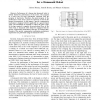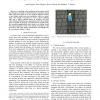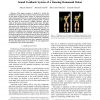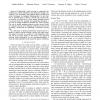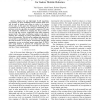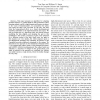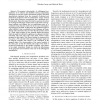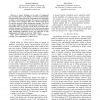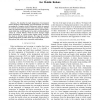IROS
2007
IEEE
14 years 5 months ago
2007
IEEE
— Performance of a human size humanoid robot is strictly limited by performance of the motor. The progress of a motor has not been remarkable compared with the progress of electr...
IROS
2007
IEEE
14 years 5 months ago
2007
IEEE
— A climbing robot mechanism is introduced, which uses dynamic movements to climb between two parallel vertical walls. This robot relies on its own internal dynamic motions to ga...
IROS
2007
IEEE
14 years 5 months ago
2007
IEEE
— This paper proposes a method to model the modification of upper body motion of dance performance based on the speed of played music. When we observed structured dance motion p...
IROS
2007
IEEE
14 years 5 months ago
2007
IEEE
— Traditionally, visual servoing is separated into tracking and control subsystems. This separation, though convenient, is not necessarily well justified. When tracking and cont...
IROS
2007
IEEE
14 years 5 months ago
2007
IEEE
— Simple, fast and lightweight SLAM algorithms are necessary in many embedded robotic systems which soon will be used in houses and offices in order to do various service tasks....
IROS
2007
IEEE
14 years 5 months ago
2007
IEEE
— This paper presents an algorithm for adapting periodic behavior to gradual shifts in task parameters. Since learning optimal control in high dimensional domains is subject to t...
IROS
2007
IEEE
14 years 5 months ago
2007
IEEE
— Humans have at some point learned an abstraction of the capabilities of their arms. By just looking at the scene they can decide which places or objects they can easily reach a...
IROS
2007
IEEE
14 years 5 months ago
2007
IEEE
Abstract— The greatest characteristic of soft-fingered manipulation is its softness and flexibility during manipulating operations. In previous works, this intrinsic property h...
IROS
2007
IEEE
14 years 5 months ago
2007
IEEE
— A major challenge in the path of widespread use of mobile robots is the ability to function autonomously, learning useful features from the environment and using them to adapt ...
IROS
2007
IEEE
14 years 5 months ago
2007
IEEE
— We describe the tight integration of incremental natural language understanding, goal management, and action processing in a complex robotic architecture, which is required for...
